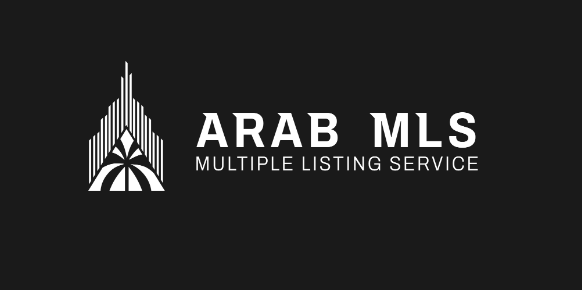In today’s competitive real estate market, generating quality leads efficiently is paramount for agents and brokers seeking to expand their clientele and close more transactions. The Multiple Listing Service (MLS), a longstanding foundation of property information exchange, has evolved beyond its traditional role, emerging as a platform for innovative monetization models. Among these, pay-per-lead strategies have gained traction for their ability to connect real estate professionals with prospective buyers and sellers more directly and measurably. This article explores the dynamics of pay-per-lead MLS monetization strategies, assessing their benefits, challenges, and applications within modern real estate practices.
Understanding Pay-Per-Lead Models in Real Estate
At its core, a pay-per-lead (PPL) model charges agents or brokers only when they receive a prospective client lead, rather than paying upfront for advertising or subscription services. This approach shifts the traditional MLS payment paradigm—historically based on membership fees or listing commissions—towards a performance-based system where marketing costs align with tangible results.
Within an MLS context, a pay-per-lead framework may operate by integrating lead capture tools directly into property listings or through dedicated portals affiliated with the MLS. When a potential buyer or seller expresses interest via email inquiries, scheduled showings, or consultation requests, the lead is tracked and monetized accordingly. This payment method effectively incentivizes MLS operators and technology providers to enhance lead quality, accuracy, and conversion potential.
The Appeal of Pay-Per-Lead Strategies for Agents and Brokers
For real estate professionals, pay-per-lead models provide several compelling advantages. First, paying only for actionable leads reduces the risk of wasted marketing spend on ineffective campaigns. Unlike broad advertising efforts with uncertain returns, PPL focuses its budget toward prospects who have already demonstrated engagement.
Such models also foster agility. Agents can scale their lead acquisition by adjusting budgets based on market dynamics, seasonal trends, or sales pipeline needs. Moreover, pay-per-lead systems often grant detailed analytics on lead sources, behaviors, and outcomes, empowering agents to optimize their sales strategies and focus on high-performing channels.
The transparency inherent in PPL arrangements appeals to brokers overseeing multiple agents or offices. By tracking cost-per-lead and conversion rates, brokerages can allocate resources strategically and establish performance benchmarks.
Monetization Pathways within MLS Platforms
MLS platforms have begun exploring and adopting various monetization pathways based on PPL principles. Some regional MLS providers partner with third-party lead generation services, embedding interactive elements within listings that captivate prospective buyers. Others develop in-house solutions that facilitate lead capture and management while integrating with customer relationship management (CRM) systems.
An emerging trend involves tiered access to leads. Certain MLS setups segment leads to premium members who pay higher fees per lead but receive exclusivity or advanced filtering capabilities. This creates an environment where lead quality aligns with investment level, encouraging competitive differentiation among agents.
Additionally, MLS portals complement traditional listing information with enriched data such as neighborhood analytics, school ratings, or market trends, offering more compelling content to visitors. Enhanced engagement can increase lead volume and, by extension, revenue potential from pay-per-lead transactions.

Challenges and Considerations in Pay-Per-Lead Implementation
Despite its merits, pay-per-lead monetization carries inherent challenges that MLS providers and real estate firms must carefully consider. One significant issue is lead quality. Not every inquiry translates into a serious or qualified buyer. MLS operators must implement robust vetting processes or scoring algorithms to filter out spam, duplicate leads, or low-intent prospects.
Moreover, the shift from traditional fee structures to PPL models alters revenue predictability for MLS platforms. Fluctuations in market activity, agent participation, or seasonal dips influence lead volumes and corresponding income. Strategic financial planning and diversified monetization streams may be required to stabilize earnings.
Another consideration involves data privacy and compliance. Capturing and distributing lead information demands adherence to regulations such as the General Data Protection Regulation (GDPR) or the California Consumer Privacy Act (CCPA). Ensuring transparent user consent and secure data handling safeguards MLS operators and member agents from legal repercussions.
From a technological standpoint, integrating pay-per-lead functionality seamlessly with existing MLS systems and external CRMs requires investment and ongoing support. User experience must remain intuitive and efficient to avoid alienating agents or frustrating prospective clients.
Maximizing Lead Conversion and Agent Success
For agents engaging with pay-per-lead MLS platforms, success hinges on swift and strategic lead follow-up. Prompt communication with prospects builds rapport and leverages interest before competitors can intervene. Utilizing CRM tools integrated with MLS platforms enhances tracking of interactions, appointment scheduling, and personalized outreach.
Training and coaching also play vital roles. Agents must develop skills in qualifying leads effectively, managing expectations, and guiding clients through transaction complexities. Understanding the nuances of pay-per-lead dynamics allows agents to optimize their cost-per-acquisition and ultimately their profitability.
Furthermore, agents benefit from providing feedback to MLS operators about lead quality and conversion experiences. Such collaboration fosters continuous improvement in lead generation algorithms, user interface design, and overall service value.
The Broader Impact on Real Estate Markets
The adoption of pay-per-lead strategies within MLS ecosystems reflects broader shifts in real estate toward data-driven, consumer-centric approaches. By emphasizing measurable outcomes, these models align industry incentives around delivering value rather than volume.
For buyers and sellers, enhanced lead capture often translates into faster responses and more personalized service from agents genuinely interested in their business. This can improve overall satisfaction and transaction efficiency.
On the other hand, the rise of performance-based monetization encourages innovation in MLS technology, including artificial intelligence tools for lead scoring, predictive analytics, and automated communication workflows. Such advancements promise to further elevate the standard of service within residential and commercial markets.
Ethical and Fair Practice Considerations
As pay-per-lead grows, maintaining fairness and transparency remains essential. MLS providers must avoid practices that unfairly disadvantage smaller agencies or individual agents lacking substantial budgets. Equitable access to leads fosters healthy competition and diversity within the marketplace.
Clear disclosures regarding costs, lead filtering criteria, and exclusivity arrangements help maintain trust. Agents should be fully informed about how lead pricing is structured and what levels of support accompany lead delivery.
Moreover, balancing monetization goals with consumer protections, such as respecting privacy rights and avoiding lead spam, ensures sustainable growth and a positive industry reputation.
Future Outlook for Pay-Per-Lead Monetization
Looking ahead, pay-per-lead models are likely to expand and refine their presence within MLS frameworks. Increased collaboration among MLS organizations, technology companies, and brokers will drive standardization and enhanced functionality.
The integration of machine learning may further improve lead qualification accuracy and predictive insights, assisting agents in focusing efforts on high-value opportunities. Virtual and augmented reality technologies could enhance lead engagement, creating immersive property experiences that stimulate inquiries.
Furthermore, international markets may adopt variations of pay-per-lead approaches, influenced by local regulations, consumer behaviors, and real estate traditions. This global diffusion underscores the model’s versatility and relevance.

Conclusion
Pay-per-lead MLS monetization strategies represent a significant evolution in how real estate professionals generate and manage client prospects. By tying payment to actual leads rather than static fees, these models provide greater transparency, flexibility, and efficiency. While challenges exist, such as ensuring lead quality and maintaining equitable access, the potential benefits for agents, brokers, MLS providers, and consumers are substantial.
The continued maturation of these strategies, supported by advancing technology and industry collaboration, promises to elevate the effectiveness of lead generation and ultimately contribute to healthier, more responsive real estate markets. Professionals attuned to this shift stand to gain competitive advantages and stronger client relationships in a landscape increasingly defined by data-driven engagement.
Frequently Asked Questions About Pay-Per-Lead MLS Monetization Strategies
-
What is a pay-per-lead model in the MLS context?
A pay-per-lead model charges agents only when they receive a genuine client inquiry, shifting MLS payments toward performance-based fees. -
How does pay-per-lead benefit real estate agents?
It reduces marketing waste by focusing costs on actionable leads, offering greater budget control and measurable return on investment. -
Are all MLS platforms using pay-per-lead strategies?
No, adoption varies by region and provider, with some platforms integrating PPL models and others relying on traditional fees. -
How do MLS pay-per-lead systems ensure lead quality?
They use vetting algorithms, filters, and manual reviews to weed out spam and unqualified inquiries before delivering leads. -
Can pay-per-lead models impact MLS revenue stability?
Yes, since income depends on lead volume, fluctuations in market activity can affect MLS financial predictability. -
What challenges exist when implementing pay-per-lead MLS solutions?
Challenges include data privacy compliance, integration with CRMs, maintaining user experience, and ensuring fair lead distribution. -
How can agents improve conversion rates on pay-per-lead platforms?
Prompt follow-up, effective qualification, and CRM usage help agents maximize lead potential and minimize acquisition costs. -
Is pay-per-lead the future of MLS monetization?
It is a growing trend that complements traditional models, with technology advances expected to refine and expand its use.













